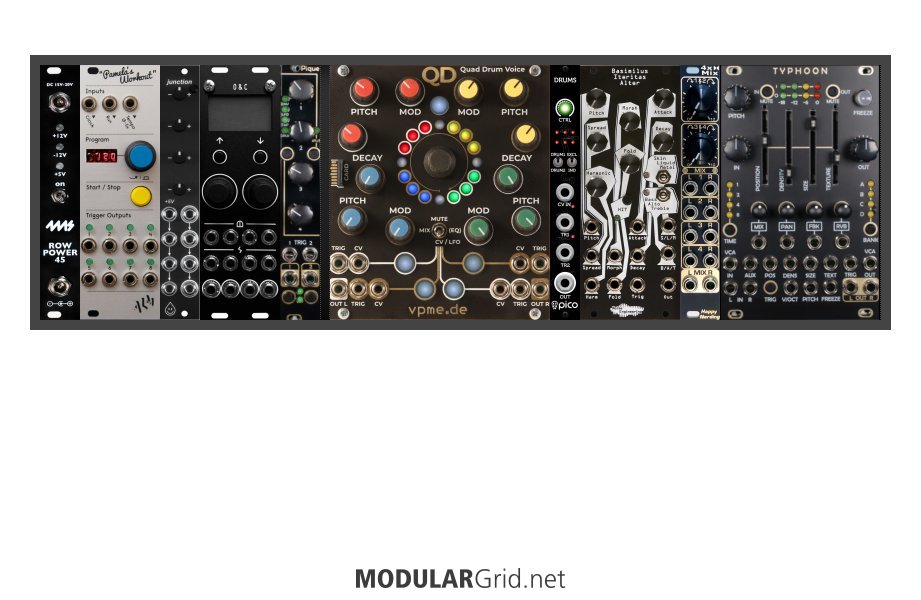Setting up a box for Synth Camp 2025 - I'm doing beats this year - I want ordered-chaos.
This patch is the basic patch for Eat Sleep Beat Repeat:
1. Pam's main clock to O+C which is in EuclidX (x2) in Phnazerville Suite
2. Acid Rain Junction attenuverting 5v on 4 channels into O+C to control Euclid Fills
3. Euclid beats from O+C into Quad Drum with internal CV/LFOs for accents etc (and lots of other quad drum goodies).
4. Basic beats (maybe euclid again) from Pams into Pico Drums set as Open and Closed hats
5. Main Clock from Pams into BIA, then various modulation from Pique into BIA decay etc (may use some pams here too)
6. All outs into Happy Nerding Mixer
7. Main outs into Typhoon set to Beat Repeat with some of Pam's CV outs to modulate various
Concerns:
1. power hungry (although I have 2x 99Wh batteries which I can charge if I go off site to a pub)
2. no headphone jack... (I could make a little headphone amp to take with me)
3. Limited FX and/or filters (but I feel the Typhoon makes up for that)
4. Compression/side-chain missing may mean be limiting (but I can us QD compressor internally, and I can route the kick independently from it if I want as I have a spare mixer input, and I'm not really planning on any stereo from the QD)
Any thoughts on changes, patch ideas,







